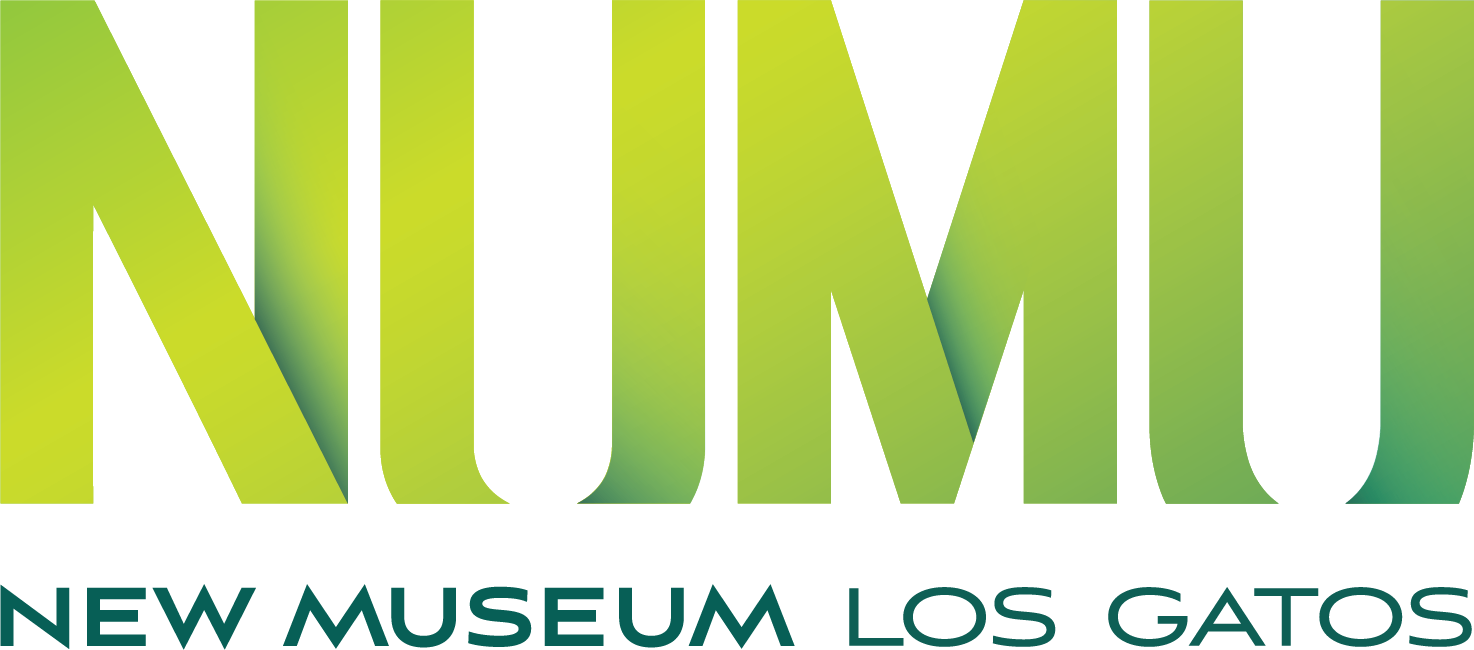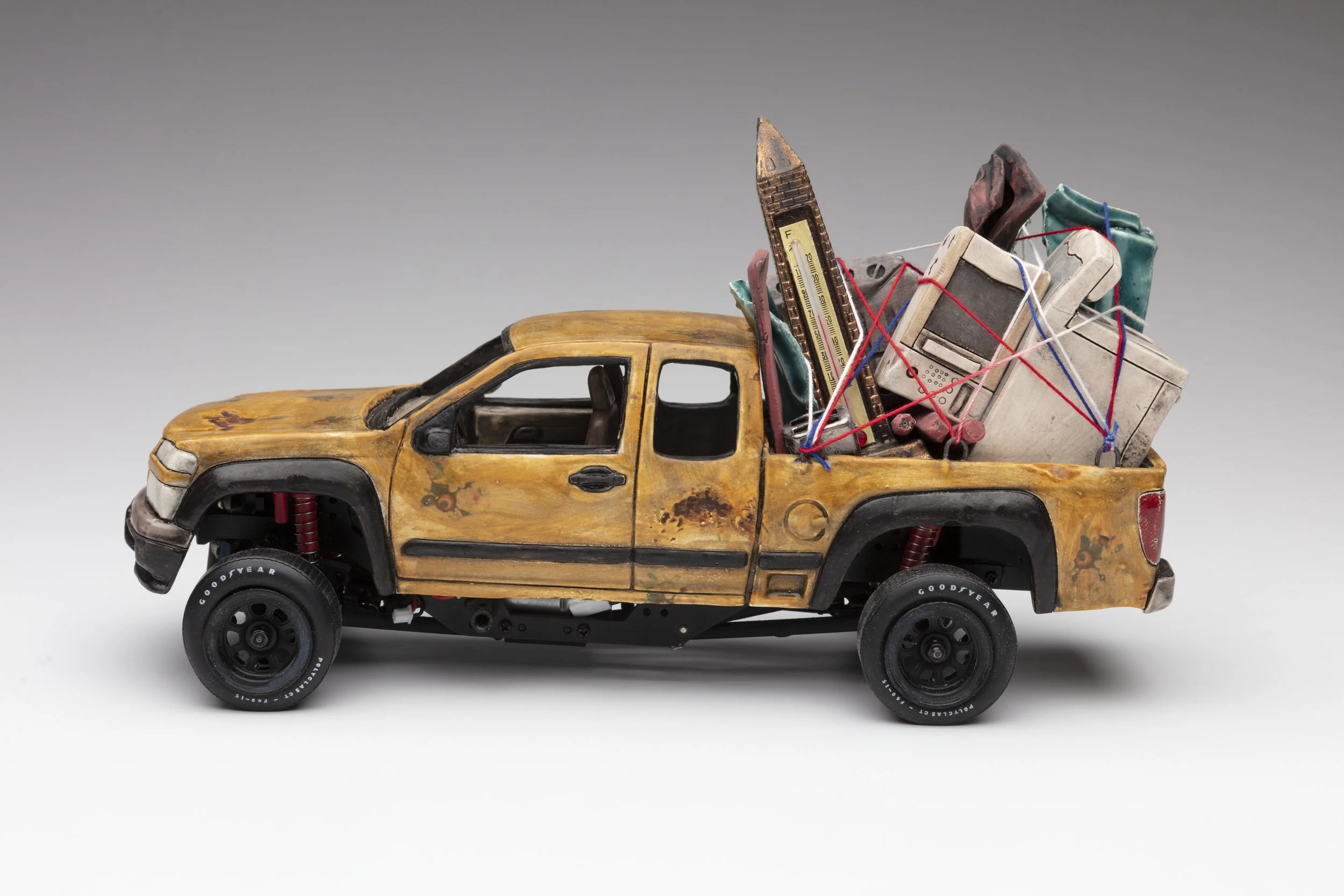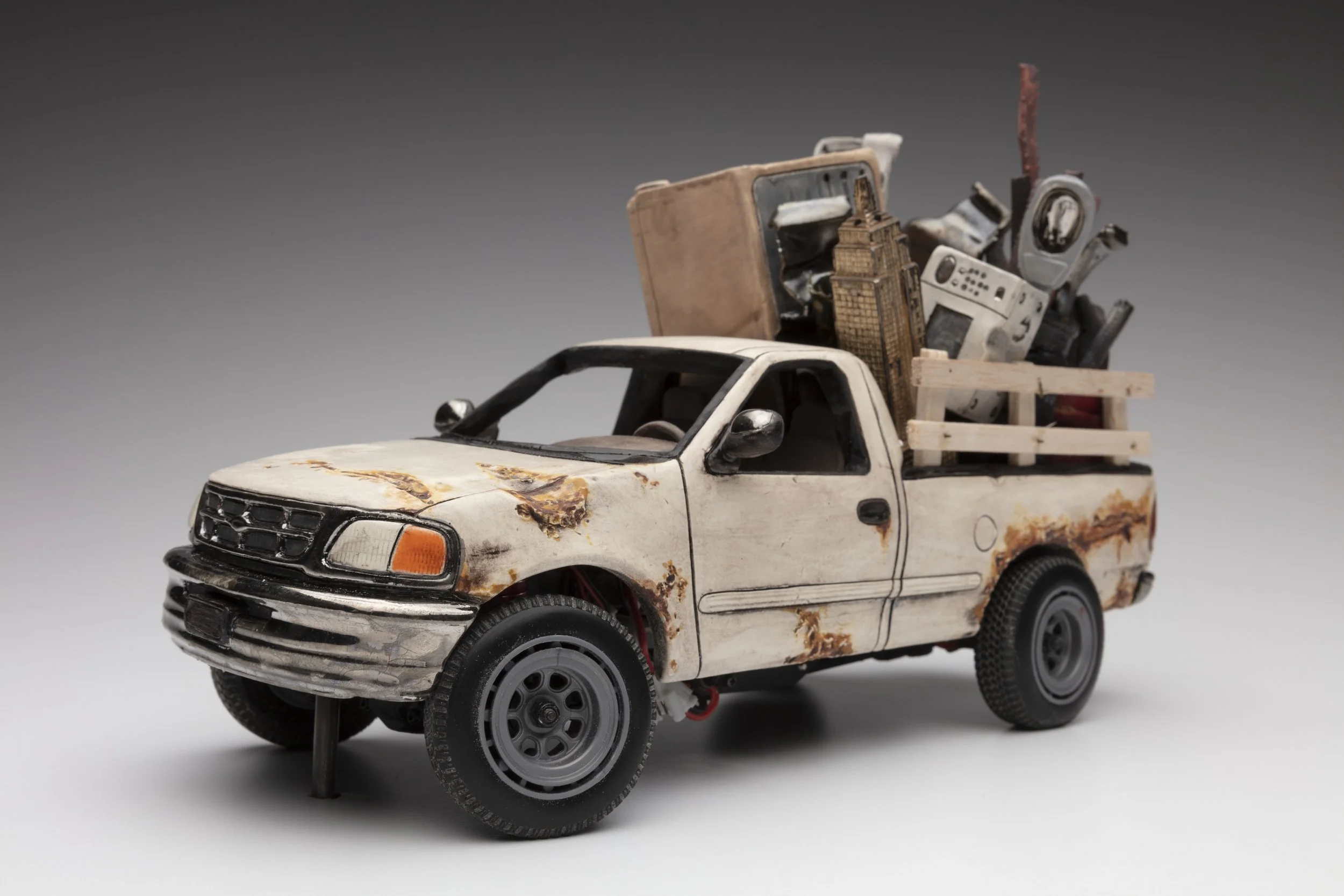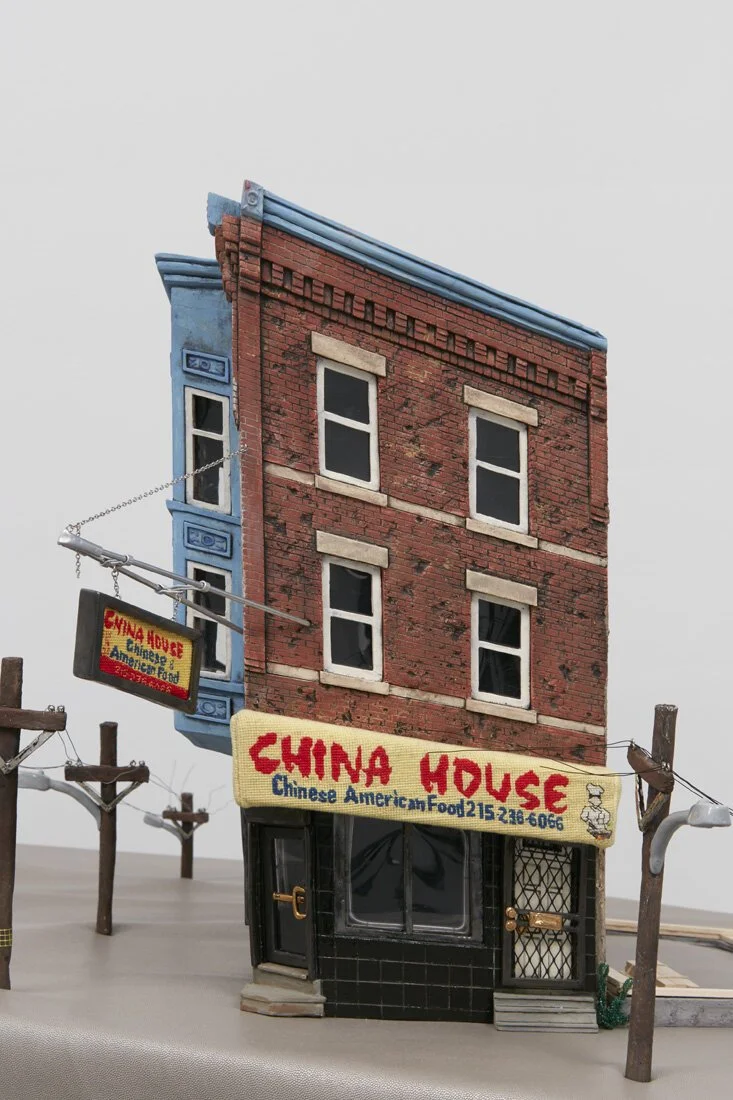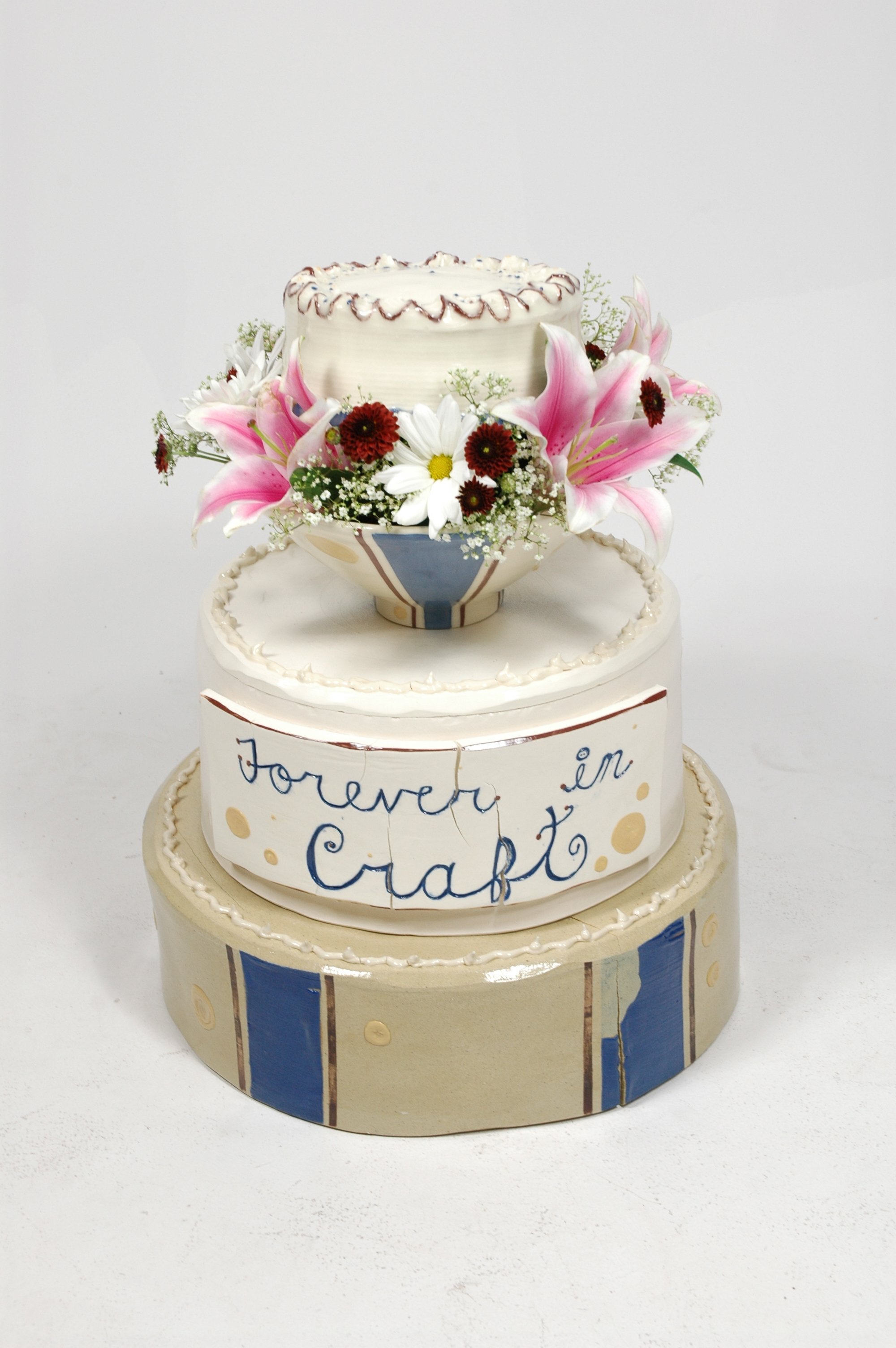Hi everyone!
Thanks so much for coming to see my show and sending me some questions. Extra big thanks to curator Allison Railo and the installation crew. It was such a great experience to have Allison climb into my brain and see what she pulled out. Seeing how she chose to display my work has helped me make new connections about it.
What other artwork have you made outside of what’s on view at NUMU?
I’ve made a bunch more buildings and trucks and trains. Lately, I’ve been especially obsessed with the mail system so I’ve been making, Mail Mugs. I just made a mailbox that is also a pitcher.
I’ve made a lot of everyday objects that are often overlooked on the streets, things like dumpsters, garbage cans, street lights, and pylons (that’s Canadian for traffic cones). Probably my favourite piece I’ve made so far is called Rat Race. I made a 16’ long wooden slot car track on which the public was invited to race ceramic trucks mounted on Remote Control Car chassis.
Do the owners of these buildings ever know you make artwork of them?
No, most of the buildings I sculpt I’ve never been inside of, and some I’ve never even seen in real life. I like to try and maintain an unbiased distance from the places I made and observe them like an anthropologist. Buildings and the spaces they occupy are vessels, they hold within them residue of the lives that have passed through them, while their outsides are reflections of their time and place. Each brick was placed by someone’s hands, the foundation poured by a crew, porch lights glow from the effort of an electrician. Once a structure is built, it becomes like a book with blank pages, ready to be marked and altered to hold its history. The front banister was bent when the second owner backed his car into it. The ornate moulding around the front door is original to the home, covered with eight layers of paint and out of place now in its rundown neighbourhood. But it hints back to a time when the houses were new, the jobs were union, the hope was palpable.
But I’ve also thought about going at my building pieces from the total opposite approach. Interviewing the owners, renters, and folks who frequent the place. I’ve thought about maybe collaborating with a local historian or just the neighbourhood matriarch. I haven’t figured out how I would display the pieces with all of the collected information and stories so for now the piece will keep rattling around in my mind.
Are there more pages in the wedding album that we don't see in the museum?
Yes! It’s the whole cliche album. There’s a page about me growing up and a page about Clay growing up, a page about our wedding cake made of clay, and more! I made the album for a show I had a year after our wedding where I showed the scrapbook pages. I got a real kick out of how mad some purists got about “crafty” scrapbooking being shown in a fine art gallery. One of my favourite super powers you get as an artist is to decide what is worthy of being in an art gallery and I deem all the crafts to be worthy of the gallery's hallowed white walls.
My apologies for the poor photo quality of the scrap books pages, I also only have these four. Thanks for this question, it made me realize that when I get my album back from NUMU I need to take some good-quality images of the book and each page. I also was able to find one lone picture of the scrapbooking show I had at the Marion Nickel Gallery at Alberta University of the Arts in 2010, my last year of undergrad. You can see the pages on the wall, as well as the vows I blew up and printed on banners. In the center is the 4-tier wedding cake I made. Each tier is made with a different type of clay and each section is made using a different building method. The top piece is made by slip casting. To make it I first bought a cake from Safeway and left it uncovered on the shelf in my studio for a week to harden… the thing didn't move and not even a fly touched it. I then poured plaster over it to make a mould. I remember the tech being mad at me for washing the cake bits out of the mould in our studio sink… sorry Brad! I then poured liquid clay, called slip into the mould and got a clay cake identical to the one I had bought from Safeway. The bowl is thrown on the potter’s wheel and the bottom two sections are handbuilt using clay slabs.
